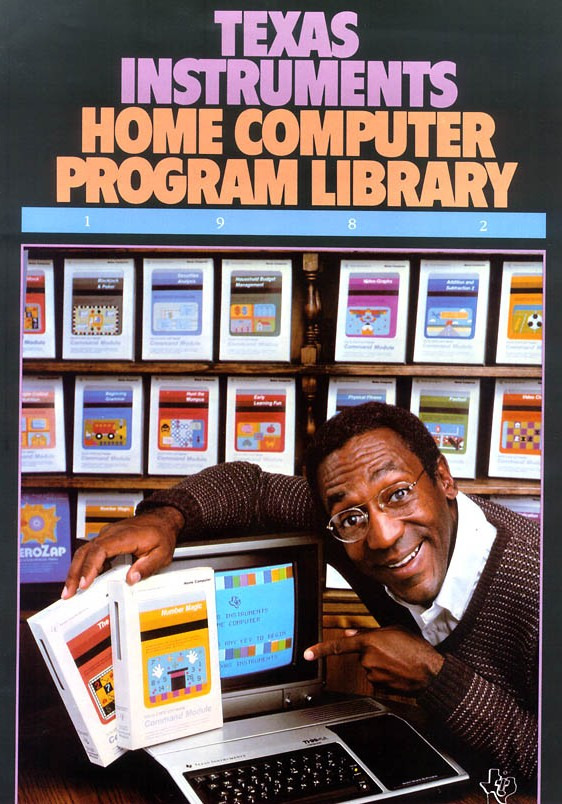Emulating Passion
When it comes to gifts for geeks, you can’t go wrong with the plug-and-go classic home videogame emulators. Relative obscurities two years ago, they seem to be wildly popular now. Many of the most influential home console videogame systems are now represented at Wal-Mart and Target:
- Commodore 64
- Intellivision
- Atari Flashback 2 console
- Atari 2600 joystick with Atari games
- Atari 2600 joystick with Activision games
- Atari 2600 paddle
- Sega Genesis Madden NFL/NHL
- Sega Genesis (and Volume 2)
- Nintendo NES (not licensed, pirate)
There’s something more to these devices than mere nostalgia, though. Many of us can trace our current careers all the way back to a childhood spent fascinated with these primitive home videogames. It was a small step, at that time, from player to creator. There was a kernel of possibility that you could somehow convince your parents to buy you a home computer and become The Next Great Videogame Programmer. Of course, this is less likely in the current era of multi-million dollar game budgets, but that do-it-yourself spirit lives on in these devices.
Nowhere is that better illustrated than in the odd history of the Commodore 64 Classic Plug & Play:
There is a story behind every electronic gadget sold on the QVC shopping channel. This one leads to a ramshackle farmhouse in rural Oregon, which is the home and circuit design lab of Jeri Ellsworth, a 30-year-old high school dropout and self-taught computer chip designer.
Ellsworth has squeezed the entire circuitry of a two-decade-old Commodore 64 home computer onto a single chip, which she has tucked neatly into a joystick that connects by a cable to a TV set. Called the Commodore 64 – the same as the computer system – her device can run 30 video games, mostly sports, racing and puzzles games from the early 1980s, all without the hassle of changing game cartridges. She has also included five hidden games and other features – not found on the original Commodore computer – that only a fellow hobbyist would be likely to appreciate. For instance, someone who wanted to turn the device into an improved version of the original machine could modify it to add a keyboard, monitor and disk drive.
Sold by Mammoth Toys, based in New York, for $30, the Commodore 64 joystick has been a hot item on QVC this Christmas season, selling 70,000 units in one day when it was introduced on the shopping channel last month; since then it has been sold through QVC’s Web site. Frank Landi, president of Mammoth, said he expected the joystick would be distributed next year by bigger toy and electronics retailers like Radio Shack, Best Buy, Sears and Toys “R” Us. “To me, any toy that sells 70,000 in a day on QVC is a good indication of the kind of reception we can expect,” he said.
Ellworth’s first venture into toy making has not yet brought her great wealth – she said she is paid on a consulting basis at a rate that is competitive for her industry – “but I’m having fun,” she said, and she continues with other projects in circuit design as a consultant.
Her efforts in reverse-engineering old computers and giving them new life inside modern custom chips has already earned her a cult following among small groups of “retro” personal computer enthusiasts, as well as broad respect among the insular world of the original computer hackers who created the first personal computers three decades ago. (The term “hacker” first referred to people who liked to design and create machines, and only later began to be applied to people who broke into them.)
More significant, perhaps, is that in an era of immensely complicated computer systems, huge factories and design teams that stretch across continents, Ellsworth is demonstrating that the spirit that once led from Silicon Valley garages to companies like Hewlett-Packard and Apple Computer can still thrive. “She’s a pure example of following your interests and someone who won’t accept that you can’t do it,” said Lee Felsenstein, the designer of the first portable PC and an original member of the Homebrew Computer Club. “She is someone who can do it and do it brilliantly.”
It’s an inspiring story. All the great developers I know are passionate about their work and have that same do-it-yourself approach to solving problems. It’s not even work; it’s fun to solve problems and build things.
When the C64, as the joystick is called informally, appeared on QVC last month, Ellsworth watched with obvious pride. “It was one of one of the best projects I’ve ever done in my life,” she said. “It was a tribute back to the computer that started it all for me.”
If you’re lucky, the result of your passion will be used and enjoyed by thousands of people. That’s the ultimate compliment. If you’re curious about Jeri, here’s a brief biography with photo.
I prefer the classic home videogame emulators, but there are similar devices for classic arcade videogames, too:
- Pac Man, Bosconian, Rally-X, Dig Dug, Galaxian
- Ms. Pac Man, Galaga, Pole Position, Xevious, Mappy
- Mortal Kombat
- Space Invaders, Phoenix, Lunar Rescue, Qix, Colony 7
- Tetris (full arcade version with 2 player mode)
- Frogger, Rush n’ Attack, Time Pilot, Scramble, Gyruss, Yie Ar Kung Fu
- Street Fighter 2
As for me, all I want for Christmas is a freakin’ superyacht. Is that so much to ask?






